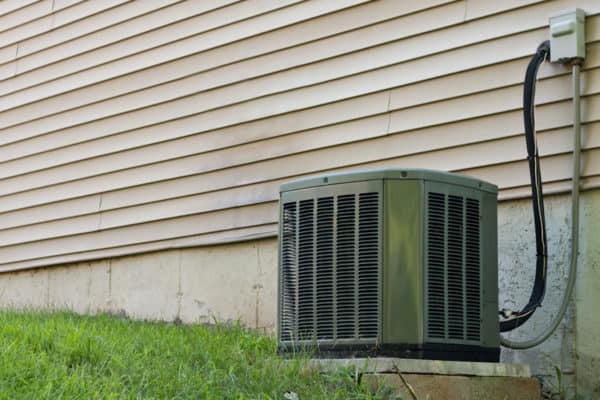HVAC Abbreviation List | Acronyms | Terminology
There are a lot of abbreviations, acronyms, terminologies, definitions and short forms used in HVAC. Beginners often struggle to understand the terms used in HVAC. So, I compile a list of the common abbreviations used in HVAC with a short explanation.
HVAC – Heating, Ventilation and Air Conditioning
HVAC stands for heating, ventilation and air conditioning. HVAC is about controlling and maintaining the temperature, humidity and air quality in an enclosed space using various technologies including air conditioners, heat pumps, furnaces, boilers and ventilation fans.
ACMV – Air Conditioning and Mechanical Ventilation
ACMV stands for air conditioning and mechanical ventilation. In regions where heating is not required, ACMV is used instead of HVAC. Without heating, ACMV often excludes equipment such as heat pumps, furnaces, boilers, radiators and electric resistive heaters.
AHU – Air Handling Unit
AHU stands for air handling unit. In plural form, the acronym for air handling units is AHUs. An AHU is a large air conditioner that is often custom-made. AHUs are mostly used in large buildings and they often work with chillers for cooling.
FCU – Fan Coil Unit
FCU stands for fan coil unit. In plural form, the acronym for fan coil units is FCUs. An FCU is a small standardized air conditioner that uses ductwork for air distribution. FCUs are the smaller version of AHUs. Usually, FCUs are deployed in the lobby and corridor of large buildings.
CHWS – Chilled Water Supply
CHWS stands for chilled water supply. It is commonly found in the chilled water system layout and schematic drawings. It is also common to have the CHWS word physically painted on the chilled water pipe to indicate the chilled water flow direction from the chiller to the air handling unit.
CHWR – Chilled Water Return
CHWR stands for chilled water return. It is commonly found in the chilled water system layout and schematic drawings. It is also common to have the CHWR word physically painted on the chilled water pipe to indicate the chilled water flow direction from the air handling unit to the chiller.
CWS – Condenser Water Supply
CWS stands for condenser water supply. It is commonly found in the chilled water system layout and schematic drawings. It is also common to have the CWS word physically painted on the condenser water pipe to indicate the condenser water flow direction from the cooling tower to the chiller.
CWR – Condenser Water Return
CWR stands for condenser water return. It is commonly found in the chilled water system layout and schematic drawings. It is also common to have the CWR word physically painted on the condenser water pipe to indicate the condenser water flow direction from the chiller to the cooling tower.
CP – Control Panel
CP stands for control panel. It is commonly found in layout and panel drawings. AHUs and FCUs usually have a CP nearby or within the same room. CP is also very common in fan rooms. Sometimes, DB which stands for distribution box is used instead of CP.
SAD – Supply Air Duct
SAD stands for supply air duct. It is commonly found in duct layout drawings. SAD is usually located at the center of the duct on a drawing. Often, the duct size can be found right after SAD to indicate the supply air duct size. It is also common to have the SAD word physically painted on the supply duct.
SAD may also stand for supply air diffuser. However, it is less common.
RAD – Return Air Duct
RAD stands for return air duct. It is commonly found in duct layout drawings. RAD is usually located at the center of the duct on a drawing. Often, the duct size can be found right after RAD to indicate the return air duct size. It is also common to have the RAD word physically painted on the return duct.
FAD – Fresh Air Duct
FAD stands for fresh air duct. it is commonly found in duct layout drawings, especially for the ventilation system. A duct size may be written right next to FAD to indicate the fresh air duct size. It is also common to have the FAD word physically painted on the fresh air duct.
OAD – Outdoor Air Duct
OAD stands for outdoor air duct. it is commonly found in duct layout drawings, especially for the ventilation system. A duct size may be written right next to OAD to indicate the outdoor air duct size. It is also common to have the OAD word physically painted on the outdoor air duct.
People who use OAD may be more familiar with ASHRAE standards as ASHRAE use the word outdoor air more often than the word fresh air in conjunction with the word indoor air.
EAD – Exhaust Air Duct
EAD stands for exhaust air duct. it is commonly found in duct layout drawings, especially for the ventilation system. A duct size may be written right next to EAD to indicate the exhaust air duct size. It is also common to have the EAD word physically painted on the exhaust duct.
FA – Fresh Air
FA stands for fresh air. it is commonly found in duct layout drawings, especially for the ventilation system. FA is commonly written next to the fresh air grille, vent or register. It is usually accompanied by an arrow pointing toward the fresh air grille indicating the airflow direction.
OA – Outdoor Air
OA stands for outdoor air. it is commonly found in duct layout drawings, especially for the ventilation system. OA is commonly written next to the outdoor air grille, vent or register. It is usually accompanied by an arrow pointing toward the outdoor air grille indicating the airflow direction.
People who use OA may be more familiar with ASHRAE standards as ASHRAE use the word outdoor air more often than the word fresh air in conjunction with the word indoor air.
EA – Exhaust Air
EA stands for exhaust air. it is commonly found in duct layout drawings, especially for the ventilation system. EA is commonly written next to the exhaust air grille, vent or register. It is usually accompanied by an arrow pointing away from the exhaust air grille indicating the airflow direction.
EAL – Exhaust Air Louver
EAL stands for external air louver. it is commonly found in duct layout drawings, especially for the ventilation system. EAL is commonly written near the external wall. It is often used to emphasize the weatherproof requirement. Instead, it could be written as WPEAL which stands for weatherproof external air louver.
I’ll update this list in the future to include more abbreviations.
Lastly, consider my HVAC Begin (eBook) if you’re a beginner and you want to have a foundational knowledge in HVAC. But, if you have a year or two of experience, then I would suggest you consider my HVAC Basics (eBook). Nonetheless, I encourage you enroll in my HVAC Beginner Course: 10 Days to Become Competent in HVAC if you want to equipped yourself with a complete set of basic HVAC skills.
HVAC Beginner Course
Learn the most basics and foundational HVAC skills including cooling capacity calculation, equipment selection, duct sizing, pipe sizing, exhaust fan sizing, controls, electrical and more.
If you have anything to add (or ask) about this topic, leave a comment down below!









